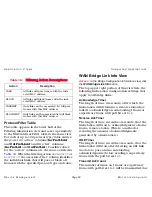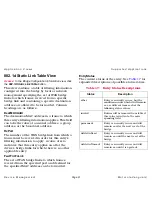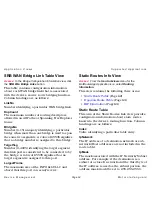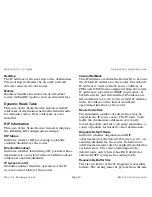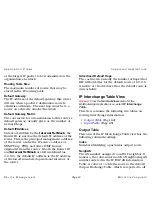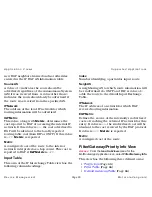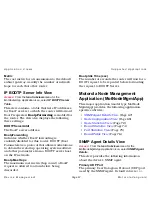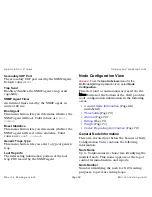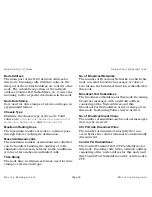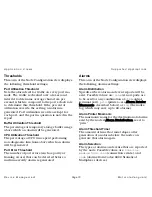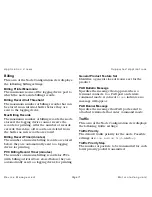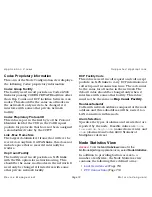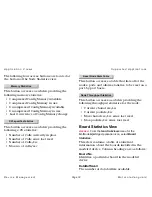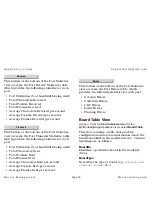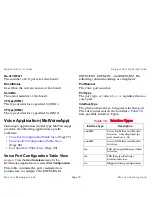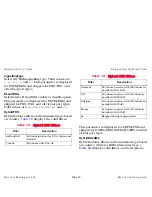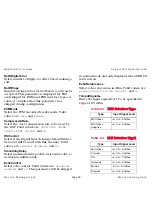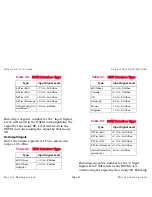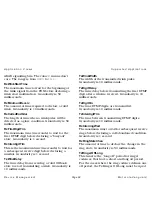
A p p l i c a t i o n V i e w s
S u p p o r t e d A p p l i c a t i o n s
D e v i c e M a n a g e m e n t
Page 70
M o t o r o l a V a n g u a r d
Thresholds
This area of the Node Configuration view displays
the following threshold settings:
Port Utilization Threshold
Sets the alarm level for traffic on every port in a
node. The traffic is checked over a 64-second
interval to determine average characters per
second, which is compared to the port’s clock rate
to determine this threshold. If the percent of
utilization exceeds the setting, an alarm is
generated. Port utilization records are kept for
each port, and the port in question is noted in the
report.
Buffer Utilization Threshold
The percentage of temporary storage buffer usage
above which an alarm will be generated.
CPU Utilization Threshold
The percentage of CPU time spent performing
non-diagnostic functions above which an alarm
will be generated.
Port Error Threshold
The number of port errors (such as parity or
framing errors) that can be detected before a
medium severity alarm is generated.
Alarms
This area of the Node Configuration view displays
the following alarms settings:
Alarm Distribution
Specifies where alarm and event reports will be
sent. Possible values are:
none
(if no reports are
to be sent) or any combination of
ctp
(control
terminal port),
prin
(printer—see Alarm Printer
Mnemonic, described below), or
log
(the node’s
log, which may save up to 60 alarms).
Alarm Printer Mnemonic
The mnemonic name for the destination of alarms
sent by the node if Alarm Distribution is set to
“prin.”
Alarm Threshold Timer
The amount of time that must elapse after
generation of an alarm before the node can
generate that alarm again.
Alarm Selection
The types of alarms and events that are reported
by the node. Possible values are:
none
,
low
,
medium
,
high
,
conn
(connection events), and
code
(alarms from Codex 6000 Statistical
Multiplexer devices).




